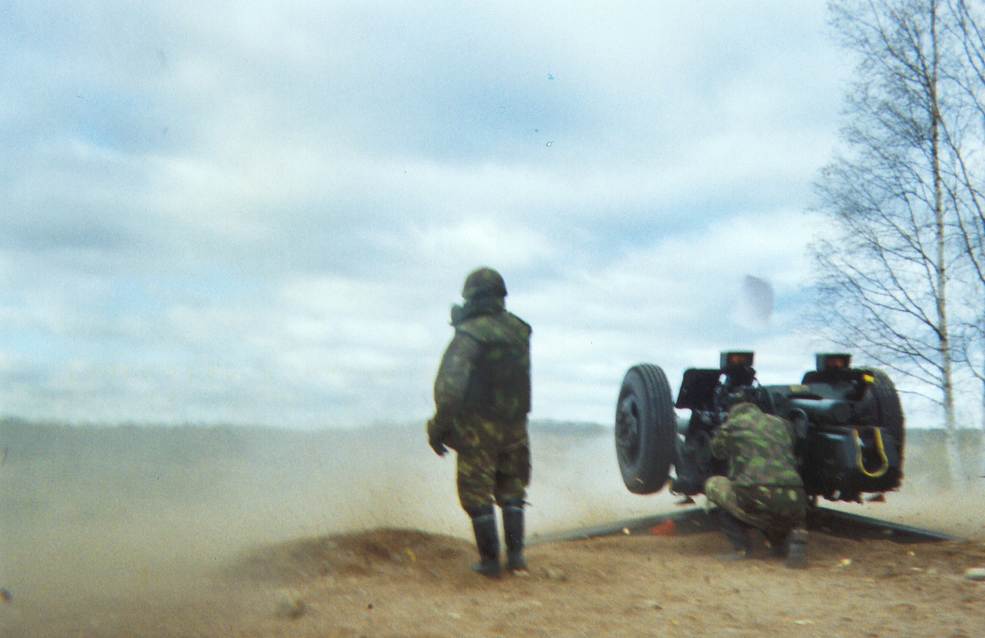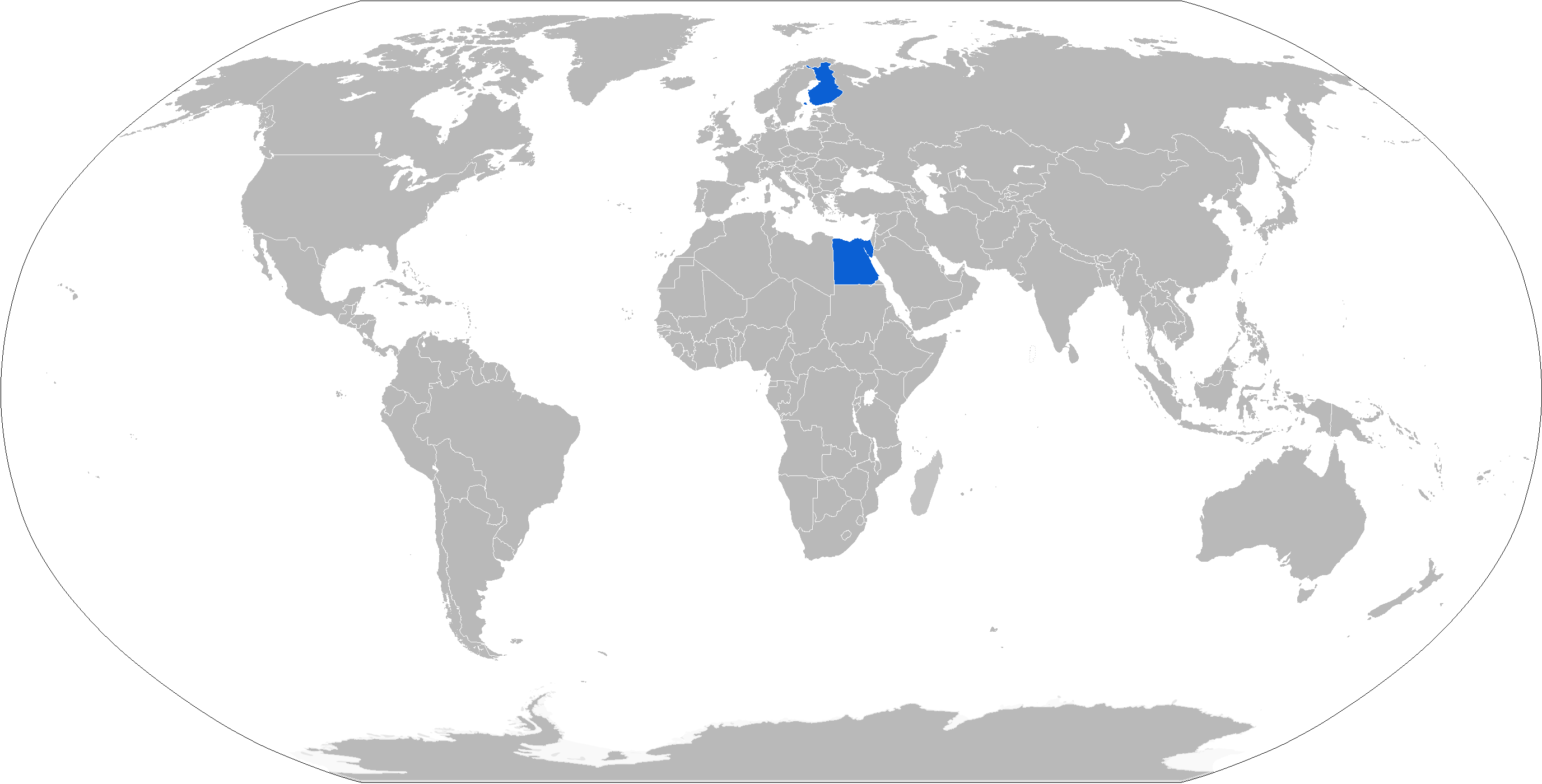|
Kainuu Artillery Regiment
Kainuu Artillery Regiment is an artillery unit of the Kainuu Brigade, which is the northernmost one of the three Finnish Defence Forces#Key wartime units, readiness brigades of the Finnish Defence Forces. In its peacetime military training for conscripts, the Artillery Regiment uses: 81 mm light mortars attached to Infantry units, 120 mm heavy mortars 120 KRH 92 fixed on the NA-122 version of the Sisu Nasu#Variants, Sisu Nasu all-terrain transport, the 122 mm towed Soviet howitzers (122 H 63), and modern 155 K 98 155 mm guns equipped with an APU to provide (minor) movement without towing vehicles. It also trains all artillery NCO's, including forward observers and mortar leaders. Organisation Fire Control and Signals Battery The Fire Control and Signals Battery trains Artillery Forward Observers for 1st and 2nd Artillery batteries and Mortar battery, as well as Signal and HQ units to relay Forward Observation information to the Artillery batteries. In addition ... [...More Info...] [...Related Items...] OR: [Wikipedia] [Google] [Baidu] |
Field Artillery
Field artillery is a category of mobile artillery used to support armies in the field. These weapons are specialized for mobility, tactical proficiency, short range, long range, and extremely long range target engagement. Until the early 20th century, field artillery were also known as foot artillery, for while the guns were pulled by beasts of burden (often horses), the gun crews would usually march on foot, thus providing fire support mainly to the infantry. This was in contrast to horse artillery, whose emphasis on speed while supporting cavalry units necessitated lighter guns and crews riding on horseback. Whereas horse artillery has been superseded by self-propelled artillery, field artillery has survived to this day both in name and mission, albeit with motor vehicles towing the guns (this towed artillery arrangement is often called mobile artillery), carrying the crews and transporting the ammunition. Modern artillery has also advanced to rapidly deployable wheeled a ... [...More Info...] [...Related Items...] OR: [Wikipedia] [Google] [Baidu] |
Kajaani
Kajaani (; sv, Kajana) is the most populous town and the capital of the Kainuu Region of Finland. It is located southeast of Lake Oulu (Oulujärvi), which drains into the Gulf of Bothnia through the Oulu River (Oulujoki). As of , it had a population of . The town was founded in the 17th century, fueled by the growth of the tar industry, but it was preceded by a long history of settlements. During the Great Northern War it succumbed to Russian forces, who ruined Kajaani Castle in 1716. Today, the local economy is mainly driven by the sawmill, lumber, and paper industries, although UPM Kymmene's paper mill, the main employer from 1907 until 2008, has since closed. Kajaani's church was built in 1896 in the Neo-Gothic style by the architect Jac Ahrenberg to replace an earlier church. Kajaani's town theatre was established in 1969. Kajaani is home to two football clubs, AC Kajaani and Kajaanin Haka, and the ice hockey team Hokki. The Kajaani University of Applied Sciences was est ... [...More Info...] [...Related Items...] OR: [Wikipedia] [Google] [Baidu] |
Finland
Finland ( fi, Suomi ; sv, Finland ), officially the Republic of Finland (; ), is a Nordic country in Northern Europe. It shares land borders with Sweden to the northwest, Norway to the north, and Russia to the east, with the Gulf of Bothnia to the west and the Gulf of Finland across Estonia to the south. Finland covers an area of with a population of 5.6 million. Helsinki is the capital and largest city, forming a larger metropolitan area with the neighbouring cities of Espoo, Kauniainen, and Vantaa. The vast majority of the population are ethnic Finns. Finnish, alongside Swedish, are the official languages. Swedish is the native language of 5.2% of the population. Finland's climate varies from humid continental in the south to the boreal in the north. The land cover is primarily a boreal forest biome, with more than 180,000 recorded lakes. Finland was first inhabited around 9000 BC after the Last Glacial Period. The Stone Age introduced several differ ... [...More Info...] [...Related Items...] OR: [Wikipedia] [Google] [Baidu] |
Kainuu Brigade
Kainuu brigade (Finnish Kainuun prikaati) is a Finnish Army unit situated in Kajaani. The brigade is one of the biggest army units, training approximately 4000 conscripts annually. The Kainuu Brigade is one of the three readiness brigades in the Finnish Army. The brigade trains troops for war-time Kainuu Jäger Brigade. [...More Info...] [...Related Items...] OR: [Wikipedia] [Google] [Baidu] |
Finnish Defence Forces
The Finnish Defence Forces ( fi, Puolustusvoimat, sv, Försvarsmakten) are the military of Finland. The Finnish Defence Forces consist of the Finnish Army, the Finnish Navy and the Finnish Air Force. In wartime the Finnish Border Guard (which is its own military unit in peacetime) becomes part of the Finnish Defence Forces. Universal male conscription is in place, under which all men serve for 165, 255, or 347 days, from the year they turn 18 until the year they turn 29. Alternative non-military service for men and voluntary service for women is available. Finland is the only non-NATO European Union state bordering Russia. Finland's official policy states that a wartime military strength of 280,000 personnel constitutes a sufficient deterrent. The army consists of a highly mobile field army backed up by local defence units. The army defends the national territory and its military strategy employs the use of the heavily forested terrain and numerous lakes to wear down an aggre ... [...More Info...] [...Related Items...] OR: [Wikipedia] [Google] [Baidu] |
120 KRH 92
The 120 KRH 92 ( fi, 120 mm kranaatinheitin, malli 1992) is a 120 mm mortar manufactured in Finland. Due to major general Vilho Nenonen's initiative, Finland has built mortars since the early 1930s and although they have not been exported, the designs have been used in many countries. The largest technological transfer of Finnish mortar technology took place in the 1950s, when the technology was transferred to Israel for Soltam. The mortar is used to support battalions and companies in battle with indirect fire, to give support fire for infantry troops and coastal fortifications, and to apply smoke or illumination on the battlefield. It is usually transported by vehicle and the maximum towing speed is 80 km/h. The mortar is operated by a seven-man crew. Mortar has been observed in August 2022 in use in Ukraine as part of Ukrainian operations in Russo-Ukrainian War. Photos reveal 4 persons in crew. Their delivery was not announced by Finland. Characteristics *Caliber: ... [...More Info...] [...Related Items...] OR: [Wikipedia] [Google] [Baidu] |
Sisu Nasu
The Nasu (acronym for Nauha-Sisu, en, Track Sisu; also meaning " Piglet" in colloquial Finnish) is a tracked articulated, all-terrain transport vehicle developed by Sisu Auto for the Finnish Army. It consists of two units, with all four tracks powered. It can carry up to 17 people, although the trailer unit can be adapted for different applications (see Variants section). There are two main versions, the NA-140 BT and the NA-110. The Nasu was tested in 1985, and the next year 11 pre-production units were ordered. Since then, more than five hundred have been manufactured to equip the armies of India, Turkey and Finland. Although it looks externally like the Bandvagn 206, which also is in Finnish Army use, it is an entirely new design, and almost 1 meter longer and heavier. It has better payload-carrying capability than the Bv 206. The Nasu is designed to carry troops and equipment through snow and bog-lands in northern Finland. For this, it is equipped with four wide (62 c ... [...More Info...] [...Related Items...] OR: [Wikipedia] [Google] [Baidu] |
122 H 63
The 122-mm howitzer D-30 (GRAU index 2A18) is a Soviet howitzer that first entered service in 1960. It is a robust piece that focuses on the essential features of a towed field gun suitable for all conditions. The D-30 has a maximum range of 15.4 kilometers, or over 21 km using rocket-assisted projectile ammunition. With its striking three-leg mounting, the D-30 can be rapidly traversed through 360 degrees. Although no longer manufactured in the nations of the former Soviet Union, the D-30 is still manufactured internationally and is in service in more than 60 countries' armed forces. The barrel assembly of the 2A18 gun is used by the 2S1 self-propelled howitzer. There are also Egyptian, Chinese, Serbian and Syrian self-propelled variants and conversions. The Syrian conversion utilizes the hull of a T-34 tank. History The 122 mm (originally 48 lines) calibre was adopted by Russia in the early 20th century, becoming very important to Soviet artille ... [...More Info...] [...Related Items...] OR: [Wikipedia] [Google] [Baidu] |
155 K 98
The 155 GH 52 APU (which stands for ''155 mm gun-howitzer, 52 calibers, auxiliary power unit''), Finnish designation 155 K 98 (''155 mm kenttäkanuuna 1998'' or "155 mm field gun 1998"; FDF terminology doesn't recognise gun-howitzers), is a Finnish towed artillery piece developed in 1998. It is largely based on the 155 K 83 with some major enhancements. It can be moved on the field short distances with its own auxiliary diesel engine, which is used in all 56 units used by the Finnish defence forces, is a 78-kilowatt Deutz diesel engine. The Egyptian units are not equipped with the APU. The 155 GH 52 is considered to be one of the most modern field artillery cannons to date and was originally manufactured by Oy Tampella AB industries (today a part of Patria, Patria Vammas Systems Oy). It has a high rate of fire (6 rounds per minute) and can fire all types of 155 mm ammunition. Domestic operators The Kainuu Artillery Regiment of Kainuu Brigade in Vuosanka shooting range ... [...More Info...] [...Related Items...] OR: [Wikipedia] [Google] [Baidu] |
Häme Regiment
Häme Regiment ( fi, Hämeen rykmentti), ( sv, Tavastlands regemente) was a unit of the Finnish Army located in Lahti. The regiment's main duty was to train conscripts and the personnel of the Finnish Defence Forces and the Finnish Frontier Guard. Organisation * Häme Cavalry Battalion (''Hämeen ratsujääkäripataljoona'') * Sports School (''Urheilukoulu'') * Logistics School (''Huoltokoulu'') * Military Music School (''Sotilasmusiikkikoulu'') * Logistics Centre History The original predecessor of Häme Regiment was founded in 1626 by Gustavus Adolphus of Sweden. Mission The Regiment was an administrative unit without significant combat capability. Technically, was is considered to be a cavalry unit, but it did not have light armored unit role of modern-day Western cavalry units. Instead, the regiment was specialized as a logistics training center which trained the bulk of the logistics personnel of Finnish Defence Forces. The Häme Cavalry Battalion was the only unit of ... [...More Info...] [...Related Items...] OR: [Wikipedia] [Google] [Baidu] |





